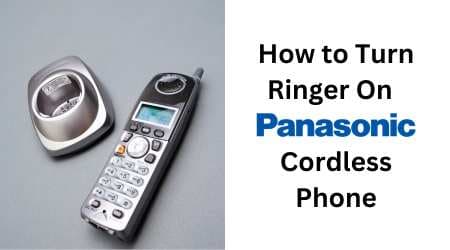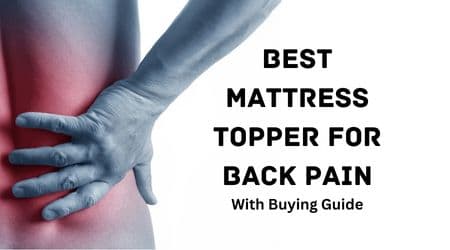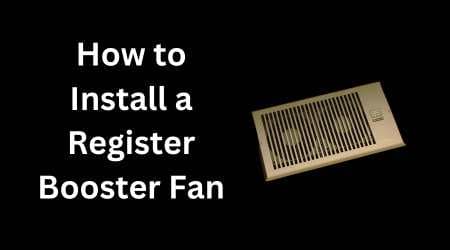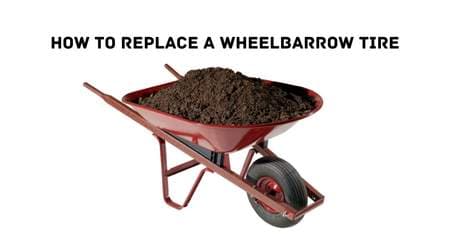The recommended space between the toe and end of a shoe is about half an inch or 1.27 centimeters. This space allows for the toes to move freely and prevents discomfort or blisters while walking.
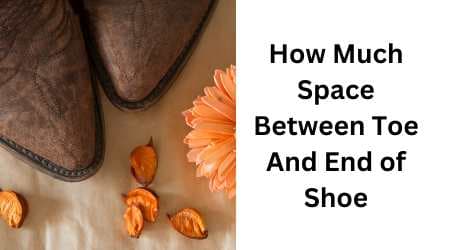
Proper fitting shoes are essential for good foot health and preventing foot problems such as bunions, corns, and calluses. Shoe sizing can vary depending on the brand, style, and material of the shoe. It is critical to measure your feet correctly and try on both shoes when purchasing new footwear.
The feet tend to swell throughout the day, so it is best to try on shoes in the afternoon or evening to ensure the most accurate fit. Wearing the right size shoes can make a significant difference in foot comfort and overall health.
What Is The Perfect Fit Between Toe And End Of Shoe?
Understanding Toe Box Measurements
Many people struggle with finding the right shoe size, with one of the most crucial factors being the space between the toe and end of a shoe. This refers to the measurement of the toe box, the part of the shoe that surrounds and cushions the toes.
To ensure a comfortable fit, it’s important to understand how to measure the toe box correctly. Here are some key factors to keep in mind:
- Toe box length should be measured from the tip of the big toe to the end of the shoe.
- The toe box should be wide enough to allow your toes to move freely without being squeezed together.
- Height of the toe box should provide enough space for your toes to wiggle.
Importance Of Toe Room
Having enough space in the toe box is essential for both comfort and foot health. Shoes that are too tight can cause a variety of problems, including blisters, corns, and calluses. Over time, they can also lead to more serious conditions like bunions and hammertoes.
It’s especially important to have enough space in the toe box if you have an active lifestyle or spend a lot of time on your feet. Without enough space, your toes may become cramped and fatigued, causing discomfort and potentially even injury.
Standard Measurements For Toe And End Of Shoe Space
To help ensure a proper fit, there are specific measurements that are considered standard for the space between the toe and end of a shoe. Keep in mind, though, that individual foot shape and size can vary, so it’s important to use these measurements as guidelines rather than absolutes.
Here are some common measurements for toe and end of shoe space:
- Half-inch (1.27 cm): This is considered a standard measurement for the space between the end of the shoe and the tip of your longest toe. This provides enough room for your toes to move comfortably without sliding around.
- Thumb-width: Another rule of thumb is to leave enough space in the toe box to fit a thumb’s width between the end of the shoe and the tip of your longest toe.
- One-third of an inch (0.84 cm): This measurement is often recommended for athletic shoes or shoes focused on performance, as it allows for more precise movements and agility.
Keep in mind that if you have wide or flat feet, you may need to add a bit more space to these standard measurements. And, of course, it’s always best to try on shoes and walk around in them to ensure a proper fit before making a purchase.
Finding the perfect fit between the toe and end of a shoe comes down to understanding toe box measurements, recognizing the importance of toe room, and knowing standard measurements for toe and end of shoe space. With these tips in mind, you can give your feet the support and comfort they need for all your daily activities.
Problems Caused By Wearing Shoes With Inadequate Toe Space
How Much Space Between Toe And End Of Shoe
We all love to wear stylish shoes that complete our fashionable attire. But what about the size and fit of the shoe? It's important to ensure that our shoes fit correctly with enough space between our toes and the end of the shoe to avoid any damage or harm to our feet.
Let's delve deeper into the potential problems caused by wearing shoes with inadequate toe space.
Bunions, Corns, And Calluses
- Wearing shoes that are too tight can cause bunions, which are painful bony bumps that develop on the base of the big toe joint.
- Corns and calluses can also be caused by wearing shoes with inadequate toe space as a result of the constant friction on the toes.
- These conditions can be painful and may require medical attention, causing discomfort and reducing mobility.
Neuromas And Plantar Fasciitis
- Neuromas, or pinched nerves, can also occur when our shoes are too tight, causing pain, numbness, and weakness in the feet.
- Plantar fasciitis, which is inflammation of the tissue that runs along the bottom of the foot, can also occur due to the lack of space in our shoes.
- Both of these conditions can be debilitating and may require extensive treatment, including surgery in severe cases.
Hammer Toes And Hallux Valgus
- When our toes are crammed into tight shoes, they can become deformed, leading to hammer toes, which is when the toe curls downward.
- Hallux valgus is another foot deformity caused by wearing tight shoes with inadequate toe space, resulting in the big toe pointing inward towards the other toes.
- Both of these conditions can be painful and may require surgery to correct.
General Discomfort And Pain
- Wearing tight shoes can cause general discomfort and pain, making it difficult to walk or stand for long periods of time.
- Poorly fitting shoes can also lead to blisters and other foot injuries, hampering our mobility and affecting our daily routine.
It's important to prioritize comfortable shoes with enough toe space to avoid any potential harm to our feet. Remember, fashion and style should never come at the expense of our health and wellbeing.
Finding The Right Shoe Size And Fit
Wearing the right shoe size is crucial for your comfort and foot health. Finding the perfect shoe size and fit may seem challenging, but it's worth the effort. Here are some tips for finding the right shoe size and fit:
Using A Brannock Device For Accurate Measurement
Using a brannock device is one of the most accurate ways to measure your feet for shoe size. Here's how you can use it:
- Stand with your heel against the back of the device.
- Ensure that your whole foot rests flat on the footplate.
- Push your toes forward so that they're flat against the front of the footplate.
- Read the measurement from the device. It should show your heel-to-toe length and width.
Comparing Sizing Metrics Across Different Brands
Sizes may vary with different brands, and it's essential to keep that in mind while shopping. Here are some factors to help you compare sizing metrics across different brands:
- Check the sizing charts on each website before buying shoes online.
- Read reviews from other customers to see if the shoes run big or small.
- Be aware of the conversion from european to us sizes.
- Bear in mind that shoe models different brands can have different sizing.
Testing Different Shoe Styles For Varying Needs
Different shoe styles are designed for different needs. To find the right fit, here are some tips to consider when trying out different shoe styles:
- Walk or run in the shoes to see if they’re comfortable.
- Try on different types of shoes for varying activities and distance
- Consider the shoe's material: Do you need something breathable or waterproof?
- Be sure to purchase shoes that accommodate any existing foot conditions or injuries.
Remember, wearing uncomfortable shoes can lead to foot pain and other issues like blisters or plantar fasciitis. Follow these tips when shopping to find the perfect fit for your feet, and you’ll be comfortable and stylish all day long.
Read also: A Guide To The Best Composite Toe Shoes
Tips For Selecting Shoe Styles And Brands For Optimal Toe Space
Choosing the right shoe size is crucial for the health of your feet. Wearing shoes that are too tight or too loose can cause blisters, calluses, and bunions. But how much space should you leave between your toe and the end of your shoe?
The answer largely depends on the type of shoe you're wearing. Here are some tips for selecting shoe styles and brands for optimal toe space.
Recommended Brands And Shoe Types For People With Wide/Narrow Feet
If you have wide feet, you should consider shoes that are specifically designed for wide and extra-wide feet. Some brands that cater to this need include new balance, brooks, altra, and saucony. Shoes with wider toe boxes and a more natural foot shape are also beneficial.
On the other hand, if you have narrow feet, shoes with a snug fit and a narrower toe box will provide optimal toe space. Good brands for narrow feet include asics, merrell, and mizuno.
Choosing Shoes Based On Arch Type And Pronation Needs
Flat feet require shoes with a flatter insole designed to decrease inward motion, known as pronation. Brands such as brooks, new balance, and asics offer shoes optimized for flat feet. In contrast, high arches require shoes with an arch support system that aid with shock absorption and cushioning, making brands such as saucony, mizuno, and new balance a better match.
Overpronation, a situation where your feet roll excessively inward, requires additional support to keep your feet steady. You can find shoes specifically designed for those needs from brooks, asics, and saucony.
Finding Shoes With Cushioned Insoles And Toe Padding
To avoid excessive rubbing of your toes against the shoe's front when walking, it's important to select shoes with well-cushioned insoles and extra toe padding. The more cushioning you can obtain, the better. Brands such as hoka one one, mizuno, and asics prioritize comfortable interiors by providing more cushioning and padding in their shoes, giving your toes ample space to breathe.
By adhering to these tips, you can help ensure your shoe selection provides the optimal amount of toe space, reducing the odds of foot-related issues later on. Remember to carefully consider shoe sizing and style based on your foot type, arch type, and pronation needs; as well as finding shoes with extra cushioning and padding that will provide ultimate comfort for your toes.
Frequently Asked Questions On How Much Space Between Toe And End Of Shoe
How Much Space Should Be Between Toe And End Of The Shoe?
The ideal space between your longest toe and end of the shoe should be around 0. 5cm to 1cm. This space will allow your toes to move freely without feeling cramped or too spacious.
What Happens If The Shoe Has Less Space Than The Ideal Length?
If the shoe has less space than the ideal length, it can cause pressure on your toes causing blisters and calluses. A tight-fitting shoe can also cause hammertoe or ingrown toenails.
How Do You Measure The Space Between Your Toes And Shoes?
Stand up with the shoe on, using your finger, locate the tip of your longest toe. Press that finger against the tip of your shoe, and note where it lines up. The distance between the end of the shoe and your finger is the space between your toe and shoe.
Is It Okay To Have More Than An Inch Between Toe And Shoe?
No, having more than an inch between your longest toe and end of the shoe means the shoe's size is too big. It can cause your foot to slide inside the shoe, causing blisters, heel slippage, and arch pain.
What If Both Feet Have Different Sizes?
While it is common for one foot to be slightly larger than the other, always select the bigger weight as a perfect fit. A shoe that is too small or tight can cause severe pain, injuries, and foot ailments.
Conclusion
The right amount of space between your toes and the end of your shoes is crucial for your overall foot health and comfort. Wearing shoes that fit properly can help prevent problems such as blisters, calluses, and even more serious issues such as bunions and hammer toes.
It is important to measure your foot accurately and try on different sizes and styles of shoes to find the perfect fit. Don't forget to leave some room for your toes to move around and wiggle. Your feet will thank you for it! Keep in mind that the right shoe fit and proper foot care are the keys to maintaining healthy, happy feet for years to come.
So take the time to find the perfect pair of shoes and enjoy all of your daily activities, without any foot discomfort.

